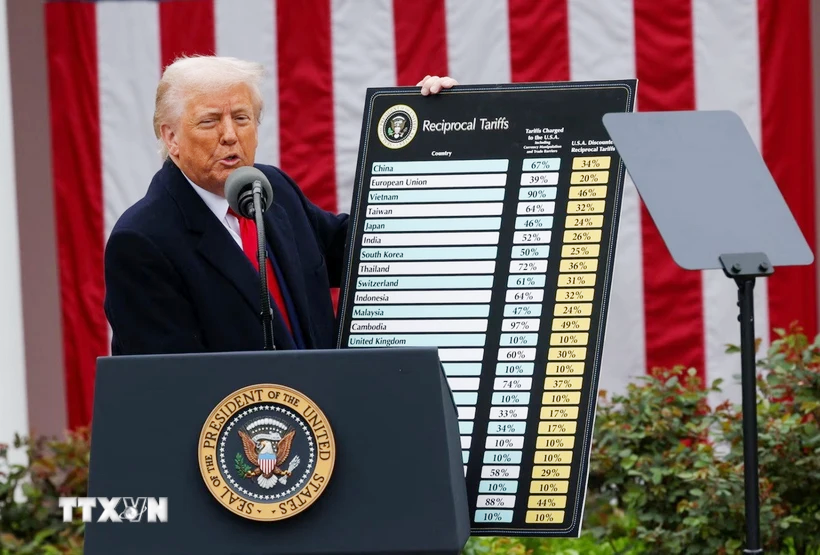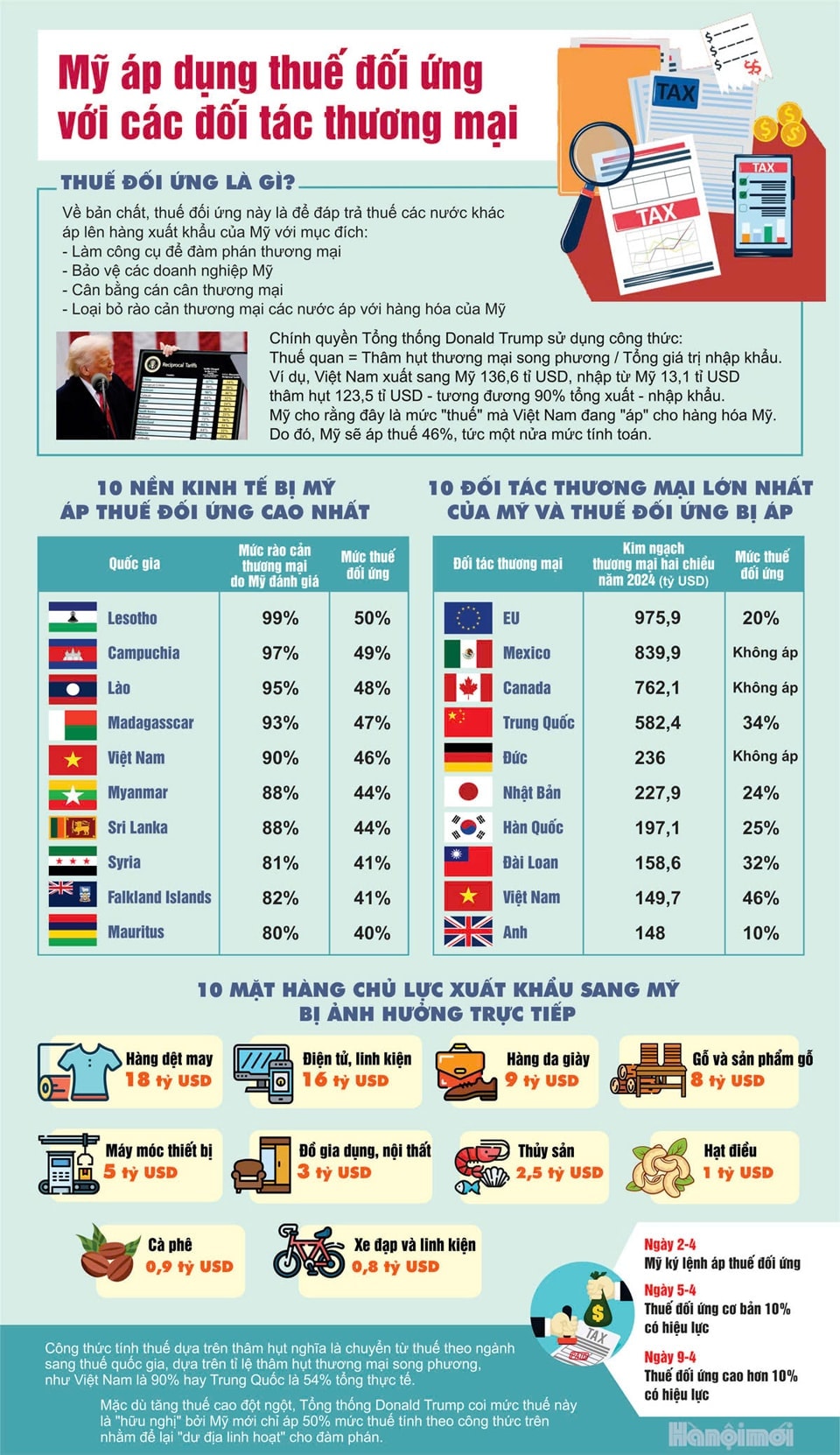At 11:01 a.m. today, April 9 (Vietnam time), the US's reciprocal tax rate applied to a series of countries and territories officially took effect.

According to a statement from the US Customs and Border Protection, the agency began implementing President Donald Trump's new tariffs at exactly 0:01 on April 9, US time (ie 11:01 on April 9, Vietnam time).
A White House official confirmed the tariffs would include the 104% rate Trump imposed after China retaliated against Washington.
"Right now, China is paying 104% tariffs," Reuters news agency quoted Mr. Trump just before G-hour.
According to Reuters, Vietnamese Deputy Prime Minister Ho Duc Phoc is expected to hold talks with US Treasury Secretary Scott Bessent on April 9 (US time).
In an internal schedule seen by Reuters, Mr. Phuc also plans to meet with leaders of American businesses such as Boeing, SpaceX and Apple this week.
Mr. Phoc is scheduled to meet Mr. Bessent for about 45 minutes at the Treasury in Washington at 4 p.m. April 9 (US time). This schedule is said to be subject to change.
Faced with a 20% reciprocal tariff, European Union (EU) member states will vote today, April 9, on a list of US goods subject to retaliatory tariffs.
The list of potential targets facing 25% retaliatory tariffs includes almonds, diamonds, dental floss, soybeans, yachts and steel components...
Immediately after the US reciprocal tariffs took effect, Japan's Nikkei index fell more than 5%, and the yen rose 1%.
Taiwan stocks fell 5.8% in afternoon trading, AFP reported.
South Korea's Kospi index is also down nearly 2%, matching Australia's S&P/ASX 200 index, while Hong Kong's Hang Seng index is down more than 1.5%.
Australian stocks fluctuated sharply on the morning of April 9, wiping out tens of billions of dollars from the market.
Meanwhile, the above indicatorsChinese stock market in redwhen the morning trading session on April 9 just opened.
The CSI300 opened down 1.2%. At the same time, the Shanghai Composite Index also lost 1.1%. China's SmallCap 1000 Index fell more than 4%, along with the CSI2000 Index down nearly 5%.
However, most of the above indexes are recording an increase again. In particular, the stock of China's leading chipmaker SMIC recorded a nearly 10% increase, after Mr. Trump announced that he would impose a tax of up to 100% on Taiwan Semiconductor Manufacturing Company (TSMC) if this company did not build a factory in the US.
At the opening of the morning trading session on April 9, the yuan on the international market fell to near a record low, as investors worried about the increasing Sino-US trade tensions and the upcoming 104% tariff on China.
For the US stock market, after the end of the trading session on April 9, the S&P index closed below 5,000 points for the first time in a year, down 20% from its most recent high.
According to LSEG data, S&P 500 companies have lost $5.8 trillion in stock market value since Mr Trump announced the tariffs on April 2.
Stock prices in other major Asian markets also recorded declines at the start of the session on April 9. The Hang Seng Index (Hong Kong) was down more than 1.5%. The Nikkei 225 Index (Japan) fell more than 2%.
In a related development, Mr. Trump said his administration would soon announce a "big" tax on pharmaceuticals, saying the tax would encourage pharmaceutical companies to move to the US.
"We're going to be announcing big tariffs on pharmaceuticals very soon and when (companies) hear that, they're going to be leaving China, they're going to be leaving other places because they have to. Most of their products are sold in (the United States) and they're going to be opening factories all over our country," Trump said at an event with the Congressional Republican Committee.
Previously on April 2, Mr. Trump announced his decision to impose reciprocal taxes on goods imported into the US from dozens of countries/territories.
The US imposes a 10% tariff on all imports into the country, but will impose much higher tariffs on trading partners that have large trade deficits with the US.
China and Vietnam are among the countries subject to the highest tax rates, at 34% and 46% respectively. The European Union (EU), Malaysia, Japan, South Korea, and India are subject to rates of 20-26%...
A 10% tariff on all goods imported into the US took effect on April 5, while higher tariffs took effect on April 9.
